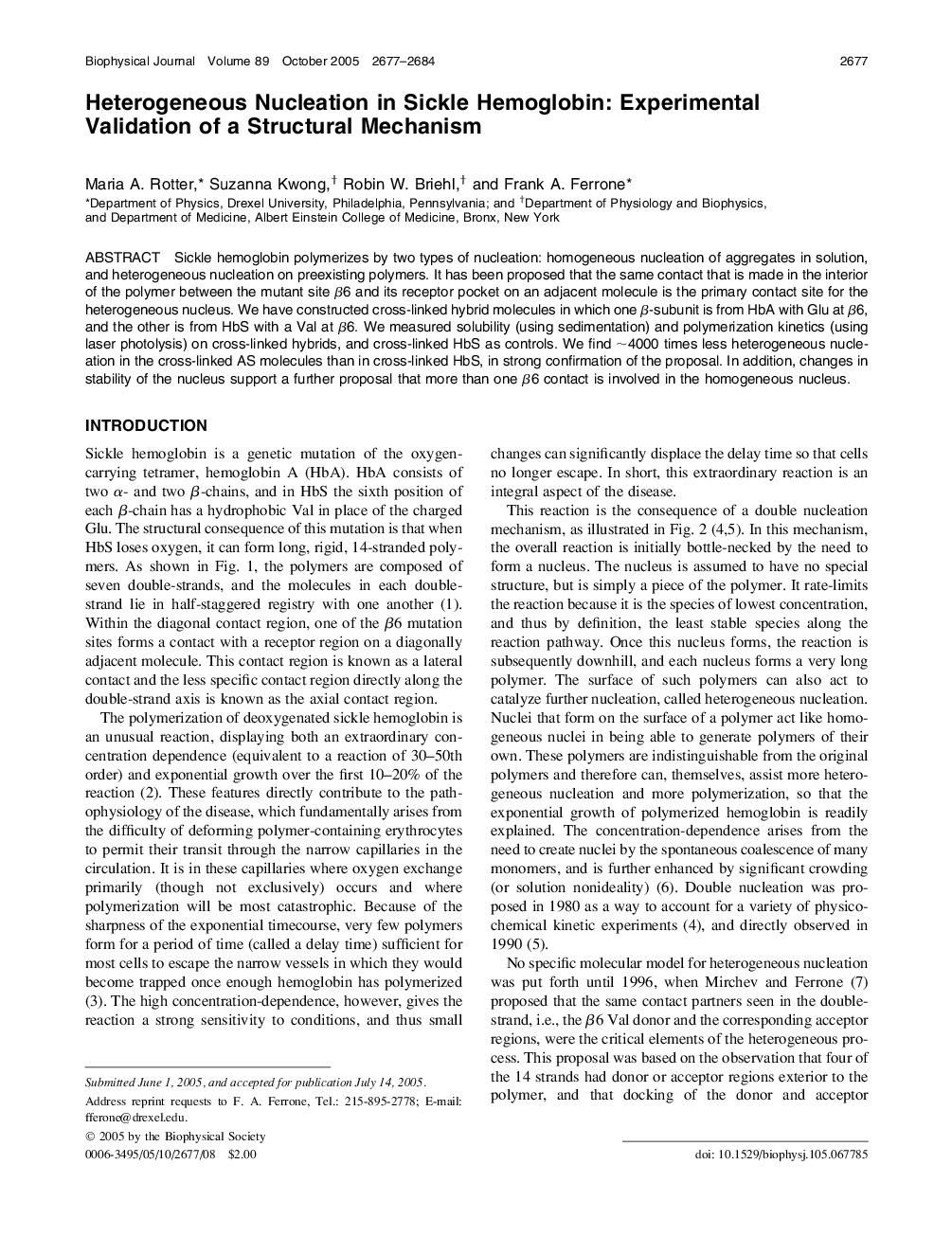| Article ID | Journal | Published Year | Pages | File Type |
|---|---|---|---|---|
| 1959030 | Biophysical Journal | 2005 | 8 Pages |
Sickle hemoglobin polymerizes by two types of nucleation: homogeneous nucleation of aggregates in solution, and heterogeneous nucleation on preexisting polymers. It has been proposed that the same contact that is made in the interior of the polymer between the mutant site β6 and its receptor pocket on an adjacent molecule is the primary contact site for the heterogeneous nucleus. We have constructed cross-linked hybrid molecules in which one β-subunit is from HbA with Glu at β6, and the other is from HbS with a Val at β6. We measured solubility (using sedimentation) and polymerization kinetics (using laser photolysis) on cross-linked hybrids, and cross-linked HbS as controls. We find ∼4000 times less heterogeneous nucleation in the cross-linked AS molecules than in cross-linked HbS, in strong confirmation of the proposal. In addition, changes in stability of the nucleus support a further proposal that more than one β6 contact is involved in the homogeneous nucleus.
